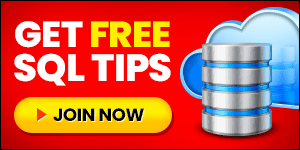By: Koen Verbeeck | Updated: 2024-12-05 | Comments | Related: > Microsoft Fabric
Problem
We recently started using Microsoft Fabric for our cloud data platform. However, we already have quite an estate of Azure data services running in our company, including a huge number of Azure Data Factory (ADF) pipelines. It seems cumbersome to migrate all those pipelines to Microsoft Fabric, especially because some features are not supported yet and ADF is the mature choice at the moment. We like the concept of Microsoft Fabric's centralization, where everything is managed in one platform. Is there an option to manage ADF in Fabric?
Solution
Microsoft Fabric is a SaaS cloud data platform that aims to centralize all data analytics experiences under one roof: data engineering, data science, machine learning, data visualization, real-time analytics—it's all possible in Fabric. However, it's still a young product. While it is continuously being updated and expanded each month, some features that are present in other Azure data services are still missing in Fabric.
For example, in ADF, you have the concept of linked services and data sets, while pipelines in Fabric do not share the same concepts. Rather, connections are created on a per-user basis:

If someone creates a connection in a pipeline and they want other people to use that connection as well, they need to give explicit permission to do so:

If permissions are not shared and the person who created the connection leaves the company, pipelines can stop working. These issues are avoided in ADF due to the concepts of linked services and datasets. Currently, ADF also has better/easier key vault integration.
These reasons may be why people are reluctant to move their existing ADF pipelines to Fabric. The downside is managing your data platform in multiple places. Recently, a new feature was introduced in Fabric that allows you to "mount" an existing ADF environment into the Fabric Data Factory environment. This permits the ability to manage your current ETL infrastructure within Fabric itself, overcoming some growing pains when moving to Fabric.
Note: At the time of writing, this feature is in public preview. The behavior or user interface may change by the time it's released as generally available.
Mount an Azure Data Factory in Fabric
When logged into Fabric, go to your Fabric-enabled workspace (either a trial workspace or a workspace backed by a Fabric capacity). In the workspace, open the dropdown list next to the New button, and select More options at the bottom.

In the Data Factory section, choose Azure Data Factory (preview)

You will be presented with a list of ADF instances that can be found in your tenant.

At the moment – and keep in mind this feature is in preview – it is not possible to mount an ADF instance that is integrated into a git repository.

In practice, this might mean that your development environment of ADF cannot be mounted yet (as the dev environment is typically git integrated). However, your test, UAT, or production environment can, as those are typically not git integrated but rather updated through CI/CD pipelines after a pull request in the dev environment.
Select the instance you want to mount and click OK to mount it.

This might take a minute…

Once it's done, you'll get a notification.

Click on View Azure Data Factory to go to your mounted instance. You can also find it in the explorer of your workspace:

When you open the instance, it will feel quite familiar to your original ADF instance:

The difference here is that the author and manage screens are in the same pane. You can edit items, such as triggers for example:

It's also possible to add an activity to a pipeline (or update/remove an existing activity).

However, keep in mind that you can only add activities that are supported by Azure Data Factory. Activities only available in Fabric Pipelines (such as the Office 365 Outlook activity) cannot be added.
It's also possible to create brand new items:

In the Manage section, you can view the Linked Services:

Or the Integration Runtimes:

You can edit existing items and create new items by hovering over the menu item. This will show an ellipsis. By clicking on it, you can add a new item:

If there are no items on the list, you'll get a message and a button to create a new item:

There are a couple of things missing though. This is the manage pane of the "original" ADF instance:

It would be helpful if at least Factory Settings and Global Parameters were also available in the mounted version (maybe this will be added later).
You can start a pipeline in debug mode from the Author section.

However, the monitoring section is also missing. If you want to view the past execution statuses of your pipelines, you'll need to go to the original ADF instance.

There you can see the results of all the executions, even the ones started within the mount in Fabric:

Conclusion
With the ability to mount an existing ADF instance into a Microsoft Fabric workspace, we're one step closer to a single integrated and centralized data platform in the Microsoft cloud. Most essential features are there, such as the ability to add or modify pipelines, datasets, or data flows, and to view and manage linked services, triggers, and integration runtimes.
However, some key features are missing, notably the monitoring pane, or the ability to manage global parameters. Currently, ADF instances linked to a git repository are not supported. This means that for some actions, you'll still need to go to the actual ADF instance. We need to wait and see if these features make it into the final product.
Next Steps
- For all Fabric tips, check out this overview.
- Want to learn more about Azure Data Factory? There's a free tutorial available!
About the author
 Koen Verbeeck is a seasoned business intelligence consultant at AE. He has over a decade of experience with the Microsoft Data Platform in numerous industries. He holds several certifications and is a prolific writer contributing content about SSIS, ADF, SSAS, SSRS, MDS, Power BI, Snowflake and Azure services. He has spoken at PASS, SQLBits, dataMinds Connect and delivers webinars on MSSQLTips.com. Koen has been awarded the Microsoft MVP data platform award for many years.
Koen Verbeeck is a seasoned business intelligence consultant at AE. He has over a decade of experience with the Microsoft Data Platform in numerous industries. He holds several certifications and is a prolific writer contributing content about SSIS, ADF, SSAS, SSRS, MDS, Power BI, Snowflake and Azure services. He has spoken at PASS, SQLBits, dataMinds Connect and delivers webinars on MSSQLTips.com. Koen has been awarded the Microsoft MVP data platform award for many years.This author pledges the content of this article is based on professional experience and not AI generated.
View all my tips
Article Last Updated: 2024-12-05






